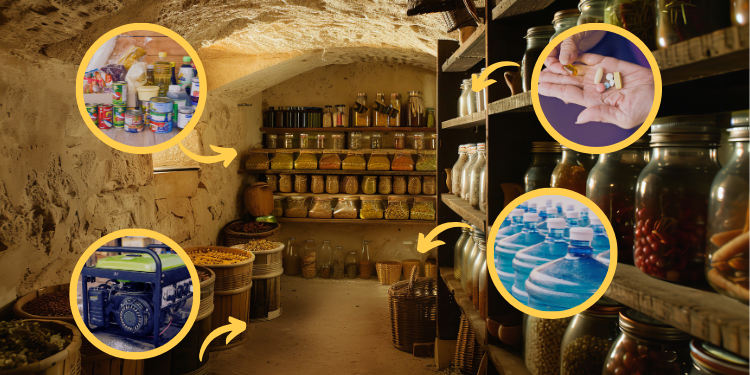There are a lot of essential items that you need to stockpile to be fully prepared for natural disasters and worst-case scenarios. It’s tempting to simply load up on a lot of food, water, ammo, and other supplies and call it good. Things get locked away in storage areas, tote bins, and barrels without being thought of again until they’re needed.
Yet there are some simple stockpiling mistakes that a lot of preparedness-minded people make. Some like forgetting to rotate supplies, or not having the right medical supplies could even kill you in some scenarios.
To keep you alive, well, and well-prepared for whatever may come, I thought we should take a closer look at a few somewhat common stockpile mistakes and how to prevent them.
Neglecting to Rotate Supplies
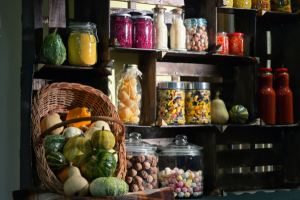 Forgetting to rotate food supplies and OTC medications is one of the most common mistakes preppers make. Especially if you have a large stockpile.
Forgetting to rotate food supplies and OTC medications is one of the most common mistakes preppers make. Especially if you have a large stockpile.
Even things like MREs, dehydrated meals, and certain cooking oils have a long, yet limited lifespan.
Frozen foods also become prone to freezer burn after 6 to 12 months, due to microscopic ice crystals growing long enough to puncture even robust vacuum bags.
Food items that go beyond their best-used-by date will degrade, oxidize, or lose nutrient value. Expired canned goods in particular can start to harbor dangerous pathogens like botulism.
OTC medications that go past their expiration date will start to lose effectiveness. A few can even break down into other compounds that can be hard on your liver, kidneys, and other organs if ingested.
How to Prevent
The wise move is to load your stockpile with the oldest items or items that will expire toward the front first. Then use those items in your daily meals or for your camping trips. You can then replenish the used items with freshly purchased ones that get loaded into the back of the supply rotation.
However, if you want to ensure you have a more comprehensive plan for keeping your food supply fresh and abundant during a crisis, you will find valuable insights inside this guide.
It is filled with practical advice on building a long-lasting stockpile of food that doesn’t rely on refrigeration. Whether you’re new to prepping or looking to refine your current strategy, this guide offers essential tips for turning your home into a fortress of food security.
Not Meeting Nutritional Needs
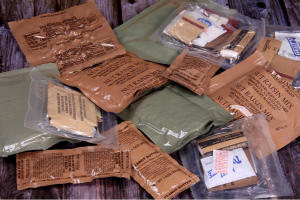 Unfortunately, a lot of stockpiled non-perishable foods don’t have 100% of the recommended daily allowance of key nutrients that you need to survive in the long term. They’re typically meant to fill your belly and give you the calories you need for a week hunting off the grid, or to survive through a natural disaster.
Unfortunately, a lot of stockpiled non-perishable foods don’t have 100% of the recommended daily allowance of key nutrients that you need to survive in the long term. They’re typically meant to fill your belly and give you the calories you need for a week hunting off the grid, or to survive through a natural disaster.
If you attempt to live exclusively off MREs, dehydrated meals, and canned goods for more than a month or so you can start to suffer nutrient deficiencies. This usually shows up as low vitamin D, B, and A deficiencies, as well as key minerals like iron, zinc, and calcium.
How to Prevent
A six-month supply of complete multivitamins will ensure your nutritional needs are met if you can’t augment your non-perishable diet with fresh fruits, vegetables, and meats. Hopefully after six months in any prolonged disaster, you should be able to make use of the growing season to become nutritionally sustainable in the long term. What I also like to have on hand is this natural tincture that helps with keeping my gut in good health. I recommend it especially for times of crisis when you don’t have access to a lot of fresh food and every bit helps.
Just make sure you have enough complete multivitamins for everyone in your family. Then note the expiration date and rotate them accordingly just like you would OTC medications in your stockpile.
Failure to Stockpile Essential Medications
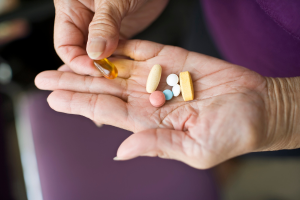 If you or a member of your family relies on prescription medications, they need to be included in your stockpile. Failing to have enough of these essential medications can be life-threatening, especially in cases where the person might be insulin-dependent or need a specific heart medication to treat a chronic condition.
If you or a member of your family relies on prescription medications, they need to be included in your stockpile. Failing to have enough of these essential medications can be life-threatening, especially in cases where the person might be insulin-dependent or need a specific heart medication to treat a chronic condition.
You also have to honestly account for certain medications that you or a family member might have grown dependent on. For example, quitting opioid painkillers cold turkey can be life-threatening. This is also true for certain mental health medications.
How to Prevent
The problem with prescription medications is that they are tightly regulated, and reputable doctors are rarely willing to give you a prescription for stockpiling. Your best effort starts with making sure you’re always refilling your medications as soon as possible. Having the right medications, especially antibiotics, is crucial to deal with any health issues and cover all bases for survival. Since antibiotics are typically not available over the counter, here is an ingenious way to stockpile antibiotics without a prescription, before it’s too late.
It might also be wise to research the effects of taking a half dose if you need to string out a medication that starts to run low during a disaster. Of course, this is a research exercise, and you shouldn’t just try to cut back on taking your prescription medications during normal times.
With some medications that aren’t as tightly regulated, you could ask your doctor for a larger prescription for an upcoming trip. Then later “Fib” that your medication was lost with your luggage and ask for a refill. However, an excuse like this will likely only work once.
Then you’ll also need to be wise about rotating your prescriptions to keep the stockpile of medication from expiring.
Water Stockpiling Issues
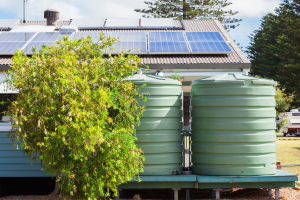 Over time, stockpiled water can become contaminated if not stored properly especially if you’re storing water in non-food grade containers or reusing containers without first fully sterilizing them.
Over time, stockpiled water can become contaminated if not stored properly especially if you’re storing water in non-food grade containers or reusing containers without first fully sterilizing them.
Storing stockpiled water improperly can also be dangerous.
Water stored in open sunlight, warm areas, or in places that go through a freeze-thaw cycle can compromise the containment vessel. Even something as seemingly simple as sunlight exposure on a translucent container can lead to toxic algae growth.
How to Prevent
Preventing water stockpiling issues starts with having food-grade containers. Then make sure they are properly sterilized for their type of material. This might require some research. You shouldn’t just trust a quick bleach water rinse.
Then make sure your water stockpile is stored in a cool, dark place. This area should be free of any sunlight exposure and should never get cold enough to freeze.
Then make sure you are rotating your water stockpile every 6 to 12 months to prevent unseen microbial presence from building up. You can find a lot of more useful information and ingenious methods, including how to test your water to see if it’s still safe to drink and the deadly water mistakes to avoid at all costs from this guide. Inside I found a super-easy DIY project called “The Pressurized Backyard Well,” aimed at providing a constant water supply. It seemed a bit intimidating at first, but the instructions were clear and the QR codes made it super easy to gather the materials and tools needed.
Insufficient Water Purification Methods
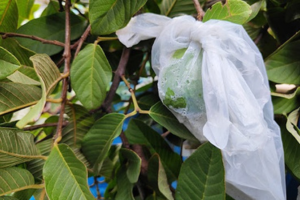 If a prolonged disaster strikes, your water stockpile will be finite, and you’ll need to be able to source other forms of fresh water.
If a prolonged disaster strikes, your water stockpile will be finite, and you’ll need to be able to source other forms of fresh water.
It’s not enough to simply hope that you’ll have a pot and a fire to boil the freshwater you find in nature.
Related: These States Will Punish You for Harvesting Rainwater
Chemical contamination, certain types of biological contamination, and the potential for particle contamination all need to be addressed. You might even find yourself in a scenario where you have to maintain light discipline and can’t safely make a fire to boil water.
How to Prevent
Every family member should have some type of personal water filtration system. This can be as simple as giving everyone a LifeStraw or similar device in their backpack. Also, make sure everyone has access to water purification tablets or a small vial of bleach. A somewhat nonconventional method of purifying water is with a branch and a sandwich bag. I found this method here and there a lot more where this came from.
Not Having Extra Stock for Bartering
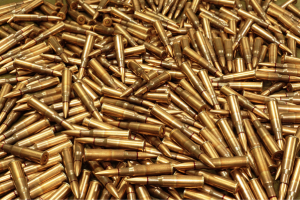 It’s nearly impossible to survive off your own stockpile indefinitely.
It’s nearly impossible to survive off your own stockpile indefinitely.
In a prolonged crisis, bartering will become the most viable way to secure the goods or services you need from others.
Making sure that you have extra medications, multivitamins or ammunition to trade to them without depleting your stockpile of essential items can be a lifesaver. Without extra stocks to trade, you simply end up in a cycle of exchanging whatever it is you desperately need this week.
How to Prevent
In a prolonged crisis, firearms and ammunition will be a very common form of barter currency. Ideally, you want to have a less lethal firearm like a .410 shotgun and shells for it to trade. This gives someone else the ability to hunt and protect themselves, without you arming someone enough to be able to take from you afterward. If you want to learn how to barter like an expert, you should learn from the best. Amish people are expert traders and you can find out how they do it from this book, written by a former Amish who shares more secrets that will help you become more self-sufficient and prepared.
Other items to stockpile for future bartering purposes include shelf-stable antibiotics, water purification tablets, rope, tarps, extra blankets, and fire-starting items.
Final Thoughts
It’s not enough to have a stockpile of food, water, ammunition, and basic survival gear and sit on your laurels. Even MREs, freeze-dried foods, OTC medications, and canned goods need to be rotated. Water should also be rotated every 6 to 12 months to prevent the accidental buildup of biological contamination. You should also store it thoughtfully, and make sure you stock ways to filter and purify water in a disaster.
You also need to be comprehensive in your stockpiling strategy. Make sure to include multivitamins to prevent nutrient deficiencies that could arise from eating preserved foods. It’s also wise to keep all your prescriptions up to date with as much on hand as your refill requirements will allow.
Having extra survival items to trade, such as small arms ammunition, and basic camping gear in your stockpile can also be a lifesaver. These are common items other people are likely to trade for, that you can use as barter currency, without depleting your other essential stocks.
You may also like:
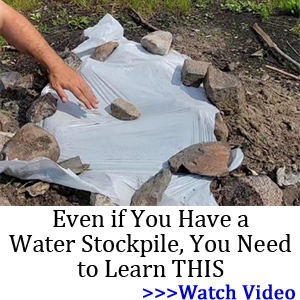 6 Post-SHTF Communication Myths
6 Post-SHTF Communication Myths
An Insanely Effective Way to Build a 5-Year Food Stockpile (Video)
The Plant Doctors Are Begging People To Grow
Chicken vs Duck
How To Make An Invisible Shelter Against Looters
Read the full article here
